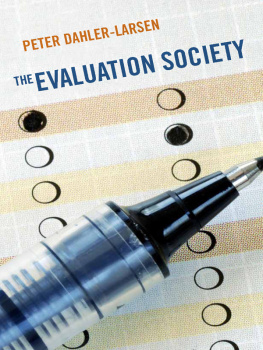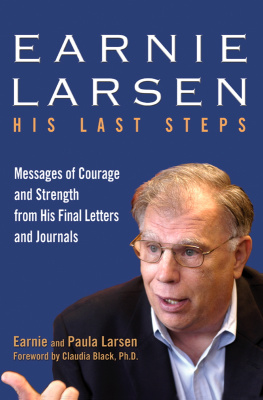Libby Larsen
MUSIC IN AMERICAN LIFE
A list of books in the series appears
at the end of this book.
LIBBY LARSEN
Composing an American Life
Denise Von Glahn
2017 by the Board of Trustees
of the University of Illinois
All rights reserved
Library of Congress Cataloging-in-Publication Data
Names: Von Glahn, Denise, 1950
Title: Libby Larsen : composing an American life / Denise Von Glahn.
Description: Urbana : University of Illinois Press, [2017] | Series: Music in American life | Includes bibliographical references and index. | Identifiers: LCCN 2017019390 (print) | LCCN 2017020909 (ebook) | ISBN 9780252099724 () | ISBN 9780252041150 (hardcover : alk. paper) | ISBN 9780252082696 (pbk. : alk. paper)
Subjects: LCSH: Larsen, Libby. | ComposersUnited StatesBiography.
Classification: LCC ML 410.l3206 (ebook) | LCC ML 410.l3206 V 6 2017 (print) | DDC 780.92 [ B ]dc23
LC record available at https://lccn.loc.gov/2017019390
Publication supported by grants from the Dragan Plamenac Endowment of the American Musicological Society, funded in part by the National Endowment for the Humanities and the Andrew W. Mellon Foundation; The Florida State University, Office of Research; The Florida State University, College of Music; and the Henry and Edna Binkele Classical Music Fund.
Cover illustration: Courtesy of Libby Larsen
For Michael,
who has never doubted
Contents
Preface
An Inauspicious Beginning
I FIRST MET LIBBY LARSEN IN Kansas City, Missouri, in 1998 at the annual conference of the Society for American Music, where she had been named that years honorary member. By some set of coincidences, I was seated next to her at dinner. She was easy-going, lively, and engaging, interested in everyone and everything. She didnt behave like others of her stature whom Id met; she didnt wear her celebrity like a badge or a shield. She blended in effortlessly. I was still thinking too much about the new faculty position Id recently accepted and a paper on Charles Ives that Id given earlier that day to focus energy on the honored guest to my left, especially one who didnt act like a world-famous composer. She was so normal it was easy to forget who she was.
Eleven years later, in the throes of writing a book about nine American women who responded to the natural world with their music, it was impossible to ignore Larsen or the large number of pieces she had written that referenced nature. And why would I want to? So many of them spoke to me. When another coincidence allowed me to interview her, I leaped at the chance, and this time the meeting was unforgettable. Over two days we discussed the impact of Larsens Minnesota environs on her thinking, her roller-coaster ride as a contemporary American composer, the inwardness or outwardness of particular pieces shed written over the years, and motherhood. We both took enormous pleasure in being able to talk about our children and in each others enthusiasm for the topic. Although I had no immediate plans to write her biography, it was clear that she was someone I wanted to learn more about. When Laurie Matheson invited me to consider writing Larsens story, I was intrigued. I emailed the composer asking if we could talk about my writing her life. She responded in what Ive come to learn is typical Larsen fashion: She characterized the project as a journey and pointed the way: Onward! It has been a journey unlike any other I have taken. This biography invites readers to come along.
THE BIOGRAPHICAL ENDEAVOR AND LIBBY LARSEN
In a 1985 interview that appeared in the Paris Review , biographer Leon Edel (190797) summarized what he believed was essential to the genre: A biography seems irrelevant if it doesnt discover the overlap between what the individual did and the life that made this possible. Without discovering that, you have shapeless happenings and gossip. Completeness is a canard, as is objectivity, as is the idea that a life has a unified shape beyond that imposed by the biographer. It is the biographers task to answer to evidence, to write responsibly from a unique position vis--vis the subject, and to tell a truthful tale among the many that could be told.
Starting in the latter half of the twentieth century, there has been no shortage of advice for would-be biographers, and it comes from a number of experienced practitioners: Robert Caro, Leon Edel, Robert Gittings, Joan D. Hedrick, Carolyn Heilbrun, Doris Kearns (Goodwin), Hermione Lee, Elaine Showalter, Liz Stanley, and Linda Wagner-Martin, to name just a few whose ideas have impacted this project. Despite their various starting points, they achieve some consensus. Edels remarks regarding the relevance of biography speak to the basic challenge facing all life-story writers: unearthing the relationships between the life, the time, and the achievements. But there are no simple causes and effects, no one-way, if-then propositions directing human lives. If there were, finding the single, defining moment would be analogous to releasing a parachutists ripcord: what had been a free fall becomes a controllable, more or less predictable descent to terra firma. It is the biographers task to unearth the daily struggles, the multiple defining moments, the warring motivations, and the constant choices that are the stuff of life, and then to
Libby Larsen has demonstrated an open-minded curiosity about the shape this account will take and has welcomed the idea that she will learn something about herself over the course of the project. She is game. And that is my intention. Edels imagery is vivid, and his goal of an integrated life study is a worthy endeavor. What is exciting about this particular project is that my subject is curious about unearthing that figure too.
Prior to the 1970s, biographical theorists didnt discuss the potential differences between life stories of male and female subjects in a systematic way. Perhaps the experts needed Betty Friedans 1963 expos, The Feminine Mystique , to recognize female lives as separate or at least separable from their male counterparts. Perhaps the change in perspective was inevitable given what else was happening at the time. Whether theorists operated under the tacit assumption that one approach fit all, or that biography-worthy subjects were, by default, male, and white, or whether they were unaware that women were largely absent from serious biographical studies except as helpmates, or that womens lives did not reveal themselves within the confines of traditional heroic plot lines, with rare exceptions, women were not the focus of serious biographies.
Personal experience as a young girl growing up in the fifties and sixties drove home the point for me, and as it turns out it did for Libby Larsen as well. I was hungry for stories about women with whom I could identify. In the juvenile biography section of my local public library I contented myself with childrens biographies of Annie Oakley, Clara Barton, and Marie Curie. There were no women musicians or artists of note. Not imagining myself a sharpshooter riding bareback, founding the American Red Cross, or discovering radium or entombed in the Panthon in Paris was problematic. In a 2012 conversation with me, Libby Larsen expressed a similar experience and frustration: I looked, and looked, and looked for models, and my school, my little library, didnt have your childrens biography series. So we had Little House on the Prairie (fictional biography), the Nancy Drew books, and the That would be the 1970s, and thats when I started discovering women biographical subjects, and mine too were visual artists.















